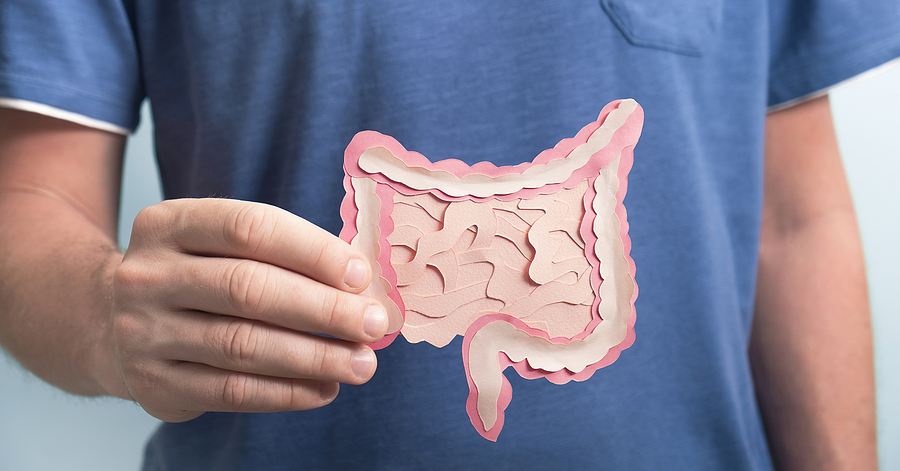Research continues to further advance our understanding of the importance of a healthy microbiome in the gut to the overall health of the body. We used to say, “you are what you eat”. But now we understand what you eat defines more than who you are, it defines how you think and what you feel.
Affect, motivation, and higher cognitive functions depend on the health of the gut microbiome. Therefore, prebiotics and probiotics are crucial to maintaining a healthy gut. To better understand the need for gut support, it helps to understand the gut-brain axis.
Mapping the Gut-Brain Axis
The gut-brain axis (GBA) involves bidirectional communication between the central and the enteric nervous system. The molecular interaction is complex. The central nervous system maintains gut homeostasis and proper digestion while the gut produces hormones such as serotonin that impact everything from mood to the quality of sleep. Afferent and efferent neurons connect neuronal pathways and transmit signals. In order to function properly, the gut relies on a microbiome teeming with gut microbiota.

These microbiota inhabit the gastrointestinal tract, which offers a large but vulnerable surface to house their ecosystem. Dietary patterns, medication usage, bacterial or viral infection, and environmental factors can disrupt the gut microbiome and negatively impact gut health. Disruption in the gut upsets the communication flow between the gut and the brain. Researchers suspect this disruption can result in conditions ranging from Parkinson’s Disease and Alzheimer’s Disease to autism spectrum disorder. While research continues, what is clear is that in order to support a healthy body and a healthy mood, you must support a healthy gut. This is where prebiotics and probiotics play an important role.
Healthy Gut Microbiome
Trillions of microbes reside in the healthy human body, and the bulk of these make their home in the gut. The gut microbiota represents four phyla: Bacteroidetes, Firmicutes, Proteobacteria, and Actinobacteria. In addition, two minor phyla, Verrucomicrobia and Fusobacteria are represented as well.
The bacteria communicate with each other as well as the host epithelium to maintain homeostasis and support the immune system. When the biome is balanced and the patient is healthy, these gut microbiota stimulate the production of short-chain fatty acids, gut-derived peptides, neurotransmitters, and regulatory T and B cells through their interactions with intestinal immune cells.

However, when the intestinal flora are disrupted and gut health is compromised, the microbiota support inflammation through increased inflammatory T and B cells, LPS, and production of proinflammatory cytokines to disrupt the blood-brain barrier.
The brain isn’t the only organ to suffer. An unhealthy gut microbiome interferes with healthy insulin and GABA levels and can also contribute to constipation, gas, bloating, IBS, ulcers, diarrhea, and reflux.
Negative Influences on the Gut Biome
Antibiotics can provide a powerful tool for fighting infection and ridding the body of unwanted bacteria. Unfortunately, antibiotics can’t differentiate between the good bacteria in the gut and the bad bacteria causing infection. Random studies of the effect of amoxicillin show a reduced abundance of enterobacteria after a course of treatment.
Highly processed foods are high in sugar. Recent studies indicate that a high intake of sugar increases the relative abundance of Proteobacteria in the gut microbiome while at the same time decreasing the abundance of Bacteroidetes. This imbalance promotes metabolic endotoxemia and systemic inflammation. The diet is one of the most influential factors in maintaining a healthy gut. Prebiotics and probiotics offer nutritional support to any diet.
How Prebiotics and Probiotics Support a Healthy Gut
The microbiome must be fed on a regular basis. Prebiotics are non-digestible plant fibers that feed the intestinal flora. Flaxseeds, okra, broccoli, artichokes, garlic, onions, avocados, green bananas, sweet potatoes, in-season blueberries and 100% cacao are examples of healthy prebiotics. Ideally, the diet would provide the right amount of plant fiber to keep the good bacteria in the gut well-fed.
Unfortunately, the modern diet often lacks sufficient plant fiber to keep the microbiome properly fed. Ironically, in feeding the body many people inadvertently starve their intestinal flora and their gut health suffers.
Probiotics supplement the beneficial microorganisms we want to flourish in the gut. While some probiotics are ingested through the diet, it frequently isn’t enough to keep the microbiome in balance. Yogurt may be a great source of Lactobacillus Acidophilus, but it isn’t a viable option for the lactose intolerant.
Everyone benefits from nutritional supplementation with prebiotics and probiotics. Both are provided in the Total Probiotics supplement by Nutri-West.
Adding Total Probiotics to a daily regime of supplements ensures each patient gets all the prebiotics and probiotics they need to support a healthy gut biome. It’s like feeding and replenishing the microbiome on a daily basis.
A healthy gut is crucial for a healthy body.
Want to Learn More?
Want to know how prebiotics and probiotics can help improve your patient care outcomes? Talk to the chiropractors at Nutri-West of New York.Dr. Jamie Forster and Dr. Jason Horowitz are ready to help you grow your practice and increase patient satisfaction. Schedule your consultation today.


